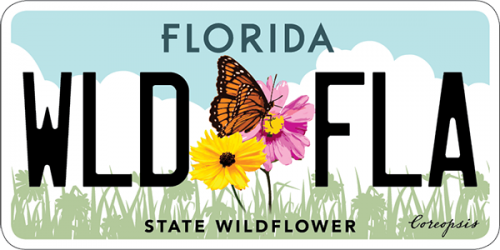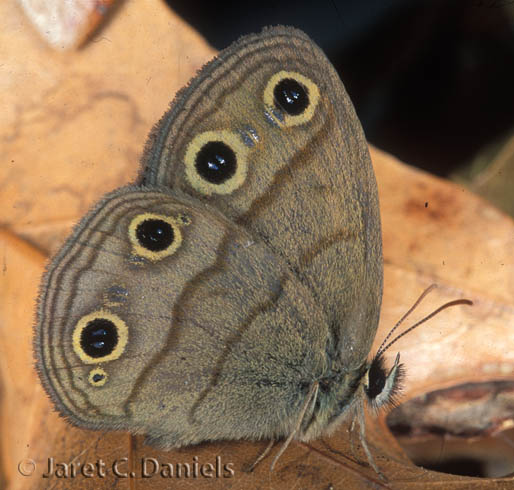- Family name: Nymphalidae/Brush-Footed Butterflies
- General description: Wings brown; dorsal forewing with two large yellow-rimmed black eyespots, dorsal hindwing with one or two eyespots. Ventral surface brown; each wing with two prominent yellow-rimmed eyespots bordered by silvery patches and two irregular, dark brown lines down the center.
- Field Marks: Wings brown with two prominent yellow-rimmed black eyespots.
- Sexes: Appear similar
- Wingspan: 40-48 mm
- Life Cycle: Egg: light green, laid singly on host leaves Mature larva: light brown with darker brown stripes and a pair of short tails on the rear Chrysalis: Light brown with darker markings
- Number of Generations: one per year
- Flight Season: Late spring
- Abundance: Common to abundant
- Habitat: Swamps, woodlands, forest margins
- Larval Host Plants: Various grasses
- Similar Species: No similar species
- Additional Information: Two subspecies (Megisto cymela viola and M. cymela cymela) occur within Florida. Viola’s Little Wood Satyr has larger, more prominent eyespots and markings. Both subspecies overlap in the panhandle. Populations show considerable variation. Adults have distinctive low, bounding flight. Partially grown larvae overwinter.
- Range in Florida
 The Florida Wildflowers & Butterflies projects at the Florida Museum are sponsored in part by the State of Florida and the Florida Wildflower Foundation, Inc.
The Florida Wildflowers & Butterflies projects at the Florida Museum are sponsored in part by the State of Florida and the Florida Wildflower Foundation, Inc.
